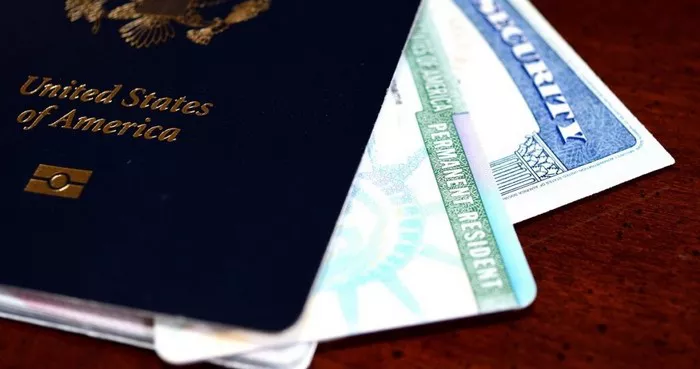In the realm of immigration to the United States, obtaining a green card through employment offers a pathway to permanent residency for individuals seeking to live and work in the country. With a myriad of visa categories and complex procedures, navigating the process can be daunting. However, armed with knowledge and understanding, applicants can successfully pursue this avenue to secure their future in the United States. This comprehensive guide aims to demystify the process, outlining the steps involved, the various employment-based immigrant visa categories, eligibility criteria, and practical tips to enhance the chances of success.
Understanding Employment-Based Immigration
Employment-based immigration to the United States provides opportunities for foreign nationals with valuable skills, talents, and expertise to contribute to the country’s economy and workforce. The process involves several stages, beginning with the acquisition of a temporary work visa, followed by the pursuit of a green card for permanent residency.
Navigating the Visa Categories
Employment-Based Visa Categories:
The U.S. Citizenship and Immigration Services (USCIS) offers several employment-based immigrant visa categories, each catering to specific skill sets, qualifications, and employment circumstances. These categories are primarily divided into five preference categories:
1. EB-1: Priority Workers
2. EB-2: Professionals Holding Advanced Degrees or Persons of Exceptional Ability
3. EB-3: Skilled Workers, Professionals, and Unskilled Workers (Other Workers)
4. EB-4: Special Immigrants
5. EB-5: Immigrant Investors
Determining Eligibility:
Eligibility for an employment-based immigrant visa hinges on various factors such as education, work experience, specialized skills, and employer sponsorship. Understanding the specific requirements of each visa category is crucial for determining eligibility and selecting the most suitable pathway.
Labor Certification and Employer Sponsorship:
For most employment-based immigrant visas, employer sponsorship is a prerequisite. This typically involves the employer obtaining labor certification from the Department of Labor (DOL) to demonstrate that the employment of a foreign worker will not adversely affect the job opportunities, wages, or working conditions of U.S. workers.
Priority Dates and Visa Bulletin:
The availability of immigrant visas is subject to numerical limitations, leading to the establishment of priority dates for each visa category. Applicants must monitor the monthly Visa Bulletin published by the U.S. Department of State to track the progress of priority dates and assess their eligibility for visa issuance.
Navigating the Application Process
Form I-140, Immigrant Petition for Alien Worker:
Once the employer obtains labor certification (if required), they must file Form I-140 on behalf of the foreign worker with the USCIS. This petition serves to establish the foreign worker’s eligibility for an employment-based immigrant visa based on the selected preference category.
Adjustment of Status or Consular Processing:
After the approval of Form I-140, eligible applicants can proceed with the final step of the green card process. This involves either adjusting their status to that of a lawful permanent resident if they are already in the United States, or undergoing consular processing at a U.S. embassy or consulate abroad to obtain an immigrant visa.
Form I-485, Application to Register Permanent Residence or Adjust Status:
For applicants adjusting status within the United States, Form I-485 is used to apply for permanent residency. This comprehensive form requires detailed information about the applicant’s personal background, immigration history, employment, and criminal record, if any.
Biometrics Appointment and Interview:
As part of the adjudication process, applicants are typically required to attend a biometrics appointment to provide fingerprints, photographs, and signature for identity verification purposes. Subsequently, applicants may be scheduled for an interview with USCIS to assess their eligibility and admissibility for permanent residency.
Form DS-260, Immigrant Visa Electronic Application:
For applicants undergoing consular processing, Form DS-260 is utilized to apply for an immigrant visa. This online form requires similar information as Form I-485 and is submitted electronically to the National Visa Center (NVC) for processing.
Tips for Success
Seek Professional Guidance:
Given the complexity of the employment-based immigration process, seeking guidance from experienced immigration attorneys or accredited representatives can significantly enhance the chances of success. These professionals can provide personalized advice, navigate legal complexities, and ensure compliance with immigration laws and regulations.
Maintain Accurate Documentation:
Throughout the application process, maintaining accurate and up-to-date documentation is essential. This includes educational credentials, employment records, tax returns, and other supporting documents required to demonstrate eligibility for an employment-based immigrant visa.
Stay Informed and Proactive:
Immigration laws and procedures are subject to change, necessitating proactive monitoring of updates and developments. By staying informed about policy changes, visa bulletin updates, and procedural requirements, applicants can adapt their strategies and timelines accordingly to maximize their chances of success.
Prepare Thoroughly for Interviews:
Whether applying for adjustment of status within the United States or undergoing consular processing abroad, thorough preparation for interviews with USCIS or consular officers is crucial. Applicants should familiarize themselves with the contents of their application, anticipate potential questions, and provide clear and concise responses during the interview.
Conclusion
Obtaining a green card through employment is a significant milestone in the immigration journey, offering foreign nationals the opportunity to establish permanent residency in the United States and pursue their professional aspirations. By understanding the intricacies of the employment-based immigration process, navigating the various visa categories, and adhering to procedural requirements, applicants can embark on a path towards securing their future in the land of opportunity. With careful planning, diligence, and professional guidance, the dream of obtaining a green card through employment can become a reality for individuals seeking to call the United States their permanent home.


